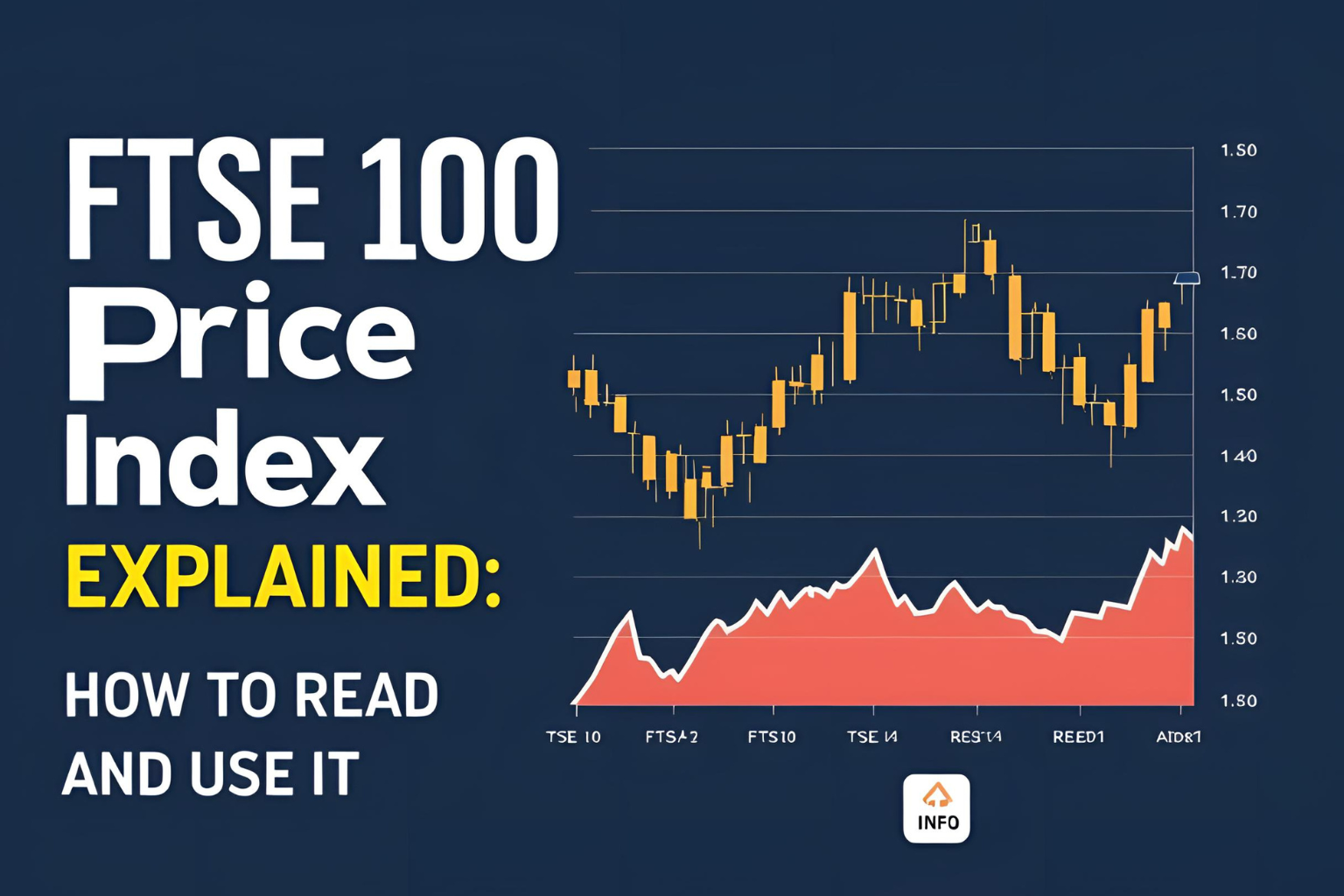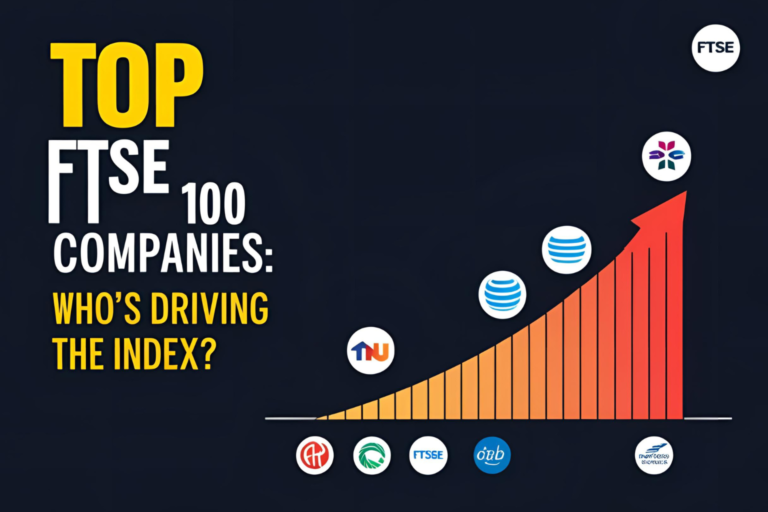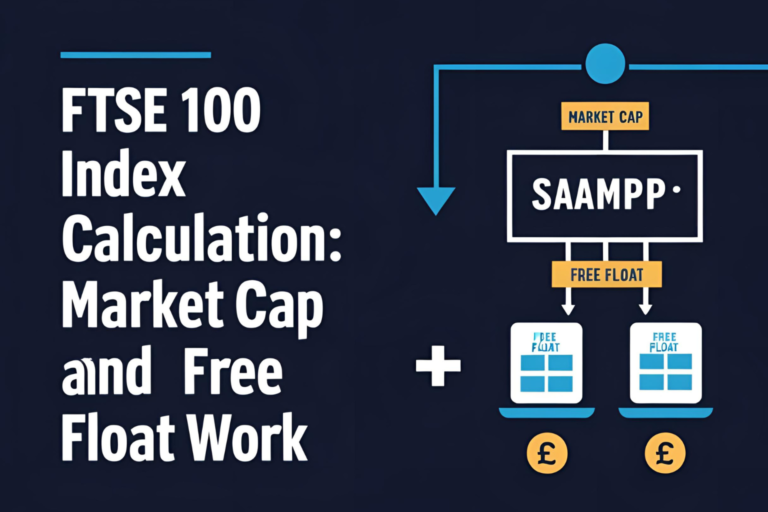FTSE 100 Price Index Explained: How to Read and Use It
Introduction:
When you check FTSE 100 updates on news websites or financial platforms, you’re most likely seeing the FTSE 100 Price Index. But what does that number actually mean? In this article, we’ll explain what the FTSE 100 Price Index is, how it works, and how investors can use it to understand market trends.
What Is the FTSE 100 Price Index?
The FTSE 100 Price Index tracks the share price movements of the 100 largest companies listed on the London Stock Exchange. It does not include dividends—it purely reflects changes in share prices.
- If stock prices go up, the index rises
- If prices fall, the index drops
- Dividends paid to investors are not factored into this version of the index
This is the most widely quoted version of the FTSE 100.
How Is It Calculated?
The FTSE 100 is a market capitalization-weighted index, meaning:
- Larger companies carry more weight
- Movements in heavyweight stocks like Shell or HSBC affect the index more than smaller firms
Formula (simplified):
FTSE 100 Index = (Sum of Free-Float Market Caps of 100 Companies) ÷ Index Divisor
The divisor is adjusted for stock splits, new listings, and other corporate actions to keep the index consistent.
Price Index vs Total Return Index
| Feature | Price Index | Total Return Index |
|---|---|---|
| Includes dividends? | ❌ No | ✅ Yes (reinvested) |
| Quoted in media? | ✅ Yes | ❌ Rarely quoted publicly |
| Better for… | Market tracking | Long-term performance measurement |
For a full picture of returns, many investors prefer the Total Return Index, but the Price Index is better for daily market sentiment.
How to Use the FTSE 100 Price Index
- Track Market Sentiment
- Daily or intraday changes show investor reactions to earnings, data releases, or global news.
- Compare Performance
- Use the index level to see how the UK’s largest companies are performing over time.
- Set Benchmarks
- Fund managers often use the FTSE 100 Price Index as a benchmark for large-cap portfolios.
Where to View the Price Index
You can monitor real-time FTSE 100 levels on platforms like:
- Yahoo Finance
- TradingView
- Bloomberg
- London Stock Exchange (LSE)
- Financial Times
Conclusion
The FTSE 100 Price Index is a simple but powerful tool that reflects how the UK’s largest listed companies are performing in real time. While it doesn’t include dividends, it serves as the go-to metric for daily updates and market tracking.
FAQs
1. Does the FTSE 100 Price Index include dividends?
No, it only reflects share price movements. Dividends are excluded.
2. Why is the price index more commonly quoted than the total return index?
Because it’s simpler, easier to follow, and more useful for daily market commentary.
3. Can I invest directly in the price index?
No, but you can invest in ETFs or funds that aim to replicate its performance.
4. Where can I find the live FTSE 100 price index level?
Financial websites like Yahoo Finance, Bloomberg, and the LSE provide real-time index data.
5. What affects the FTSE 100 price index most?
Changes in share prices—especially from large-weighted companies like Shell, AstraZeneca, and HSBC.





